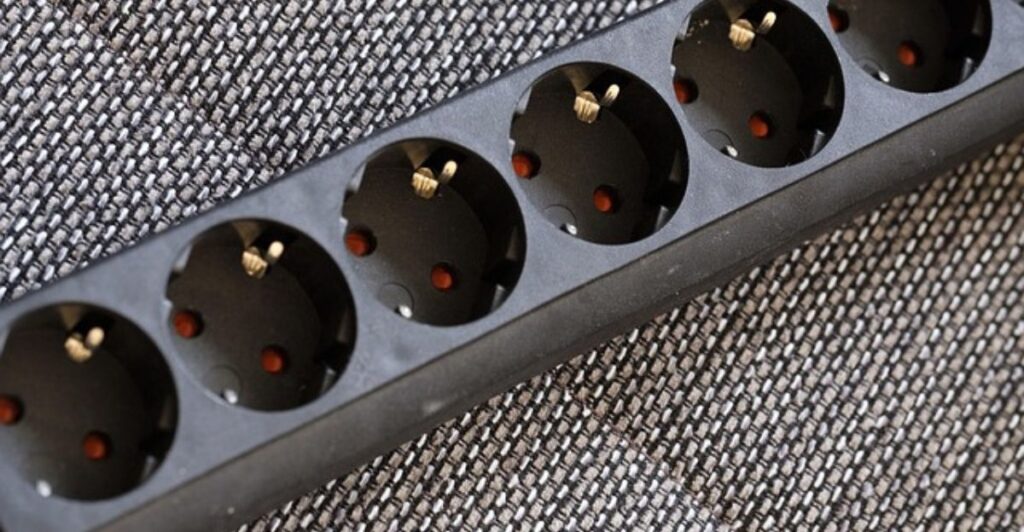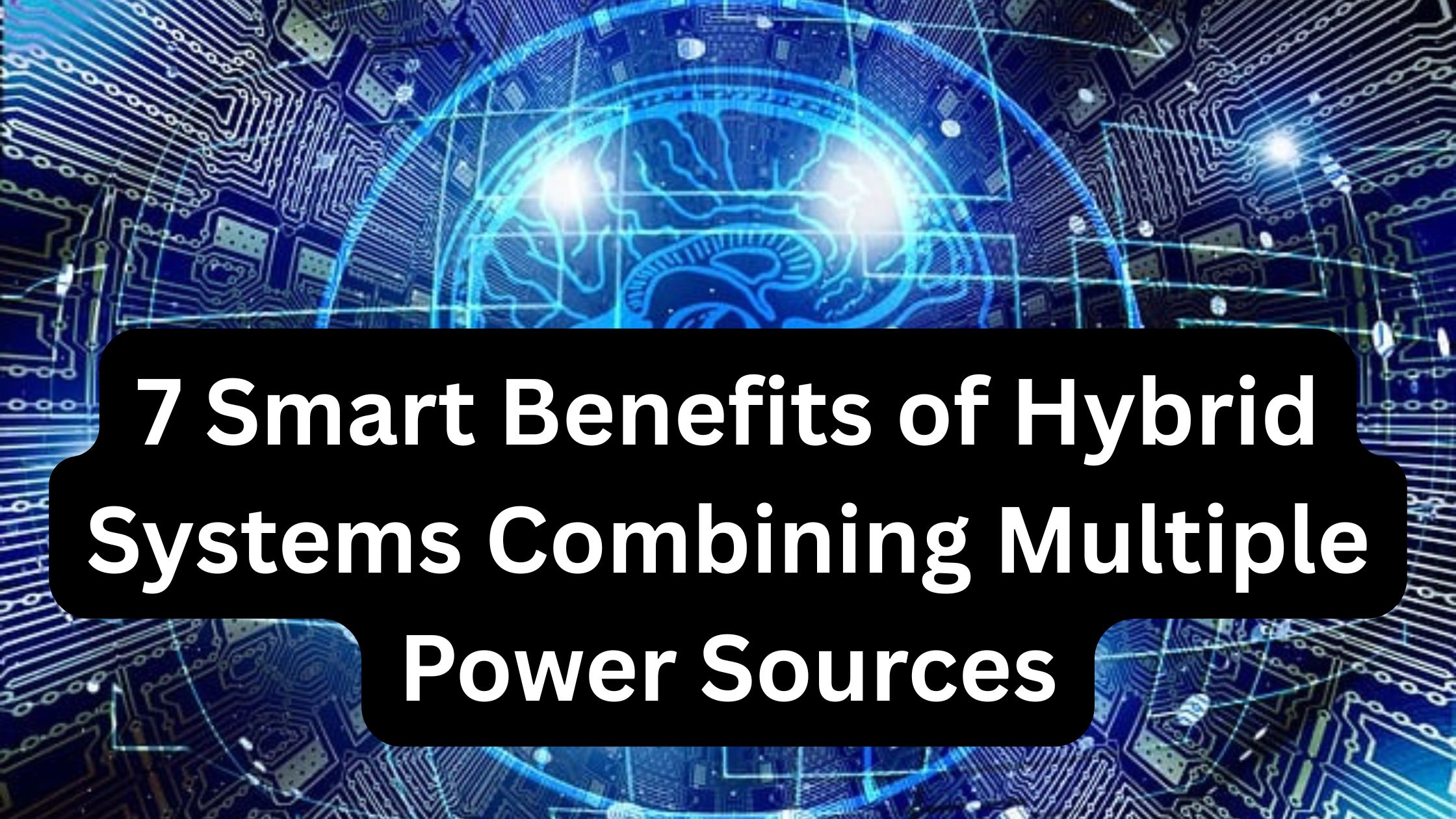Introduction
7 Smart Benefits of Hybrid Systems Combining Multiple Power Sources
In today’s energy-driven world, depending on a single power source can be risky, expensive, and inefficient. That’s why hybrid systems combining multiple power sources—such as solar, wind, diesel, and battery storage—are becoming increasingly popular. By merging different energy technologies, these systems deliver consistent, sustainable, and cost-effective power solutions for homes, offices, and industries. Let’s explore the 7 smart benefits of adopting hybrid energy systems..
7 Smart Benefits of Hybrid Systems Combining Multiple Power Sources

1. Reliable & Uninterrupted Power Supply
One of the biggest advantages of hybrid systems is energy reliability. If one source (like solar) is unavailable due to cloudy weather, another (such as wind or backup generators) can step in. This ensures uninterrupted power and reduces dependency on a single source.
2. Energy Cost Savings
Hybrid systems significantly reduce electricity costs by optimizing energy consumption from cheaper renewable sources. For example, solar panels can supply daytime energy, while batteries and wind turbines can provide backup power, reducing reliance on costly grid electricity or fuel.
3. Improved Energy Efficiency
By combining multiple sources, hybrid systems can maximize efficiency. Energy storage solutions like lithium-ion batteries store surplus power, ensuring that no energy goes to waste. This makes them a smart option for both residential and commercial users.
4. Eco-Friendly & Sustainable
Hybrid systems reduce greenhouse gas emissions by minimizing the use of fossil fuels. Integrating renewable sources like solar and wind creates a sustainable energy cycle, contributing to a cleaner and greener environment.
5. Scalability & Flexibility
Another smart benefit is that hybrid systems are scalable. Whether you’re powering a small home, a remote village, or an industrial facility, you can easily expand or adjust the system to meet your energy demands without major changes.
6. Energy Security in Remote Areas
Hybrid systems are ideal for off-grid and remote locations where access to traditional electricity grids is limited. By combining solar, wind, and backup generators, these systems provide a reliable energy supply in rural or disaster-prone regions.
7. Long-Term Investment Value
Though the initial setup cost may be higher, hybrid systems pay off in the long run. They reduce utility bills, minimize maintenance costs, and often qualify for government incentives and subsidies, making them a wise long-term investment.
📈 Trends in Hybrid Energy Systems (2025)

- Long-Duration Energy Storage
Projects with batteries that can discharge for 8+ hours are gaining traction. For instance, Australia’s Limondale battery paired with a solar farm demonstrates how long-duration storage helps buffer renewable variability. This trend helps manage “dunkelflaute” periods (low solar + wind output), making hybrid systems more reliable - Falling Costs of Renewables + Storage Components
The cost of solar panels, wind turbines, and especially battery storage (e.g. lithium-ion) is steadily declining. This makes hybrid systems more affordable, accelerating adoption. - Hybrid Models: Solar + Wind + Battery
Many markets (India, Asia-Pacific, etc.) are seeing hybrid systems combining solar, wind and battery backup as a preferred configuration. These take advantage of complementary generation (e.g. solar during day, wind at other times) plus storage to smooth out supply. Greater Grid Resilience & Energy Security
Hybrid systems are being deployed for critical power applications (telecom, hospitals, rural electrification) to reduce reliance on unstable grids or fossil fuel backups. The diversification helps mitigate disruptions. - Smart Grid Integration, Digitalization & AI
Use of data, IoT, AI, predictive analytics for optimizing hybrid systems is growing. This includes real‐time monitoring, predictive maintenance, demand forecasting, and automated control systems to optimize how different sources are used. Emergence of Distributed Energy Resources (DERs), Microgrids
Smaller scale, localized hybrid systems are becoming more common. Microgrids, community energy systems, and behind-the-meter storage (at homes or businesses) are being integrated into larger grids, improving resilience and reducing losses. Energetica India+2sew.ai+2 - New Battery Technologies / Alternative Storage Media
Beyond traditional lithium-ion, there is increasing interest in novel storage technologies: flow batteries, compressed air, and even exploring green hydrogen as part of hybrid storage or backup systems. hexaclimate.com+2Market Research Future+2 - Hybrid Projects at Scale
Big hybrid renewable parks and power stations are under construction. For example, the Gujarat Hybrid Renewable Energy Park in India is one of the world’s largest, combining solar and wind generation. Wikipedia
Also the Oya Hybrid Power Station in South Africa, combining solar, wind, and battery storage. Wikipedia - Policy Support & Market Growth
Governments are introducing incentives, regulations, and targets that favor hybrid solutions. Market reports show strong growth projections (CAGR in 5-10%+ range in many regions) for hybrid power systems. The Business Research Company+2WiseGuy Reports+2 - Vehicle-to-Grid (V2G) / Energy Carrier Integration
EVs are being seen not just as loads, but as part of the storage ecosystem. Vehicle-to-Grid (V2G) technologies are expected to contribute to grid balancing, especially when integrated with renewables. Also, hydrogen as an energy carrier (green hydrogen) is becoming part of hybrid energy planning in some regions. Energetica India+2hexaclimate.com+2
💡 Suggestions for Best Results
- Choose Complementary Energy Sources
Pair solar with wind, or solar with batteries, since their peak generation times differ. This ensures smoother energy supply and fewer disruptions. - Invest in High-Quality Batteries
Opt for lithium-ion or flow batteries with long life cycles to maximize energy storage efficiency and reduce replacement costs. - Use Smart Energy Management Systems
Incorporate IoT-based monitoring, AI, or smart meters to track performance and automatically switch between power sources for maximum savings. - Plan for Scalability
Design your system with future growth in mind. Start small, but ensure it’s easy to expand when your power needs increase. - Regular Maintenance is Key
Clean solar panels, service wind turbines, and check wiring regularly to keep your hybrid system running at peak performance. - Leverage Government Incentives
Many countries offer tax rebates, subsidies, or low-interest loans for renewable hybrid installations. Research and apply to cut initial costs. - Consider Location-Specific Design
For sunny areas, prioritize solar + battery. In windy or coastal regions, solar + wind hybrids perform best. Rural areas may benefit from adding a diesel backup. - Integrate Backup Systems
Even with renewable sources, having a backup generator or secondary storage system ensures power security during peak demand or bad weather. - Use Certified Installers & Quality Equipment
Work with licensed professionals and trusted brands to ensure safety, efficiency, and warranty protection. - Monitor Energy Usage Patterns
Track when your household or business consumes the most energy, then configure the hybrid system to prioritize low-cost sources during those peak times.
✅ Conclusion
Hybrid systems that combine multiple power sources are no longer just an option—they’re the future of energy solutions. With reliability, cost savings, sustainability, and scalability, they offer smart benefits for homeowners, businesses, and communities worldwide. Investing in hybrid power is a step toward energy independence and environmental responsibility..
📚 References
- International Renewable Energy Agency (IRENA) Reports
- U.S. Department of Energy – Hybrid Energy Systems Research
- World Economic Forum – Future of Energy
❓ FAQs
Q1. What is a hybrid power system?
A hybrid power system combines two or more energy sources—such as solar, wind, diesel, or batteries—to deliver consistent power.
Q2. Are hybrid systems cost-effective?
Yes. While installation may cost more initially, hybrid systems reduce long-term energy bills and often qualify for subsidies.
Q3. Can hybrid systems work without grid electricity?
Absolutely. They are designed to work in off-grid locations, making them ideal for rural or remote areas.
Q4. How long do hybrid system batteries last?
Most high-quality batteries last between 7 to 15 years, depending on usage and maintenance.
Q5. Are hybrid energy systems good for the environment?
Yes. They reduce reliance on fossil fuels and increase the use of clean, renewable energy sources, lowering carbon emissions.

